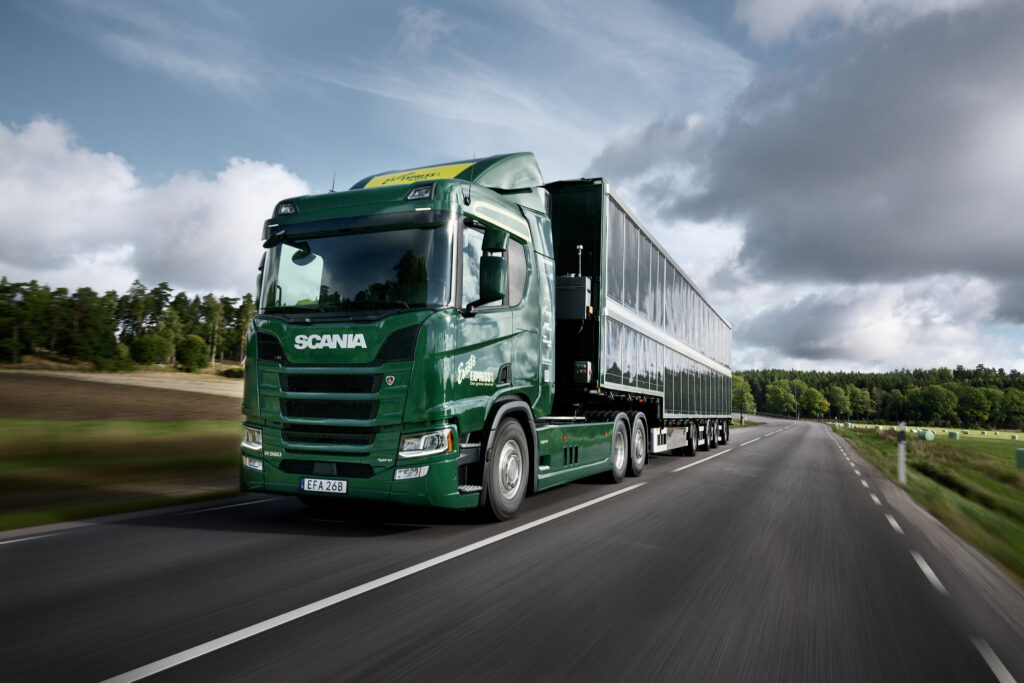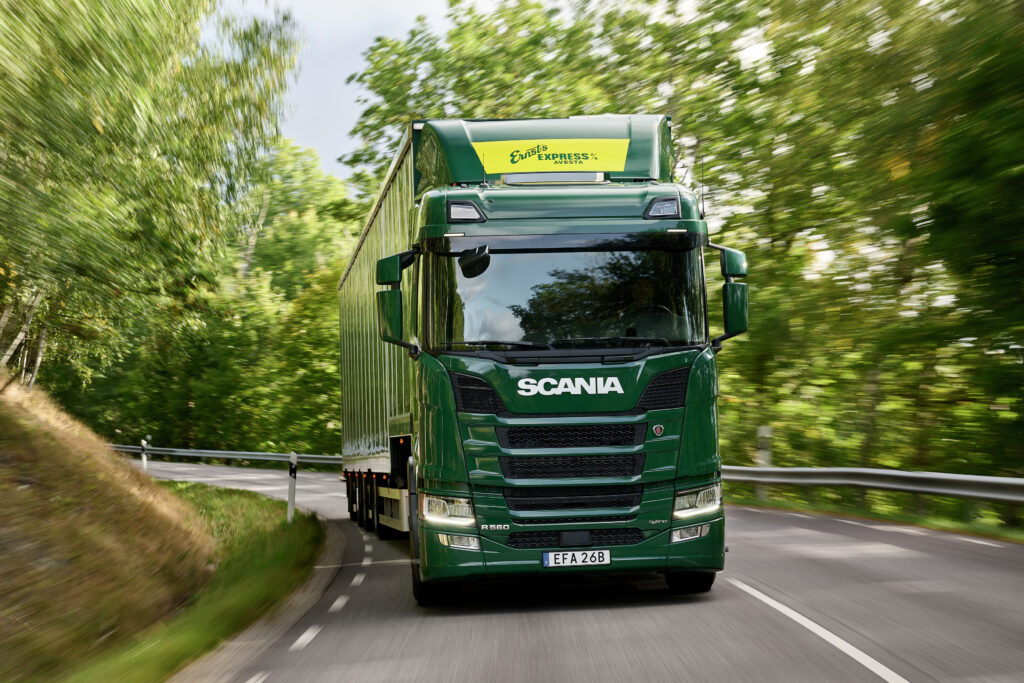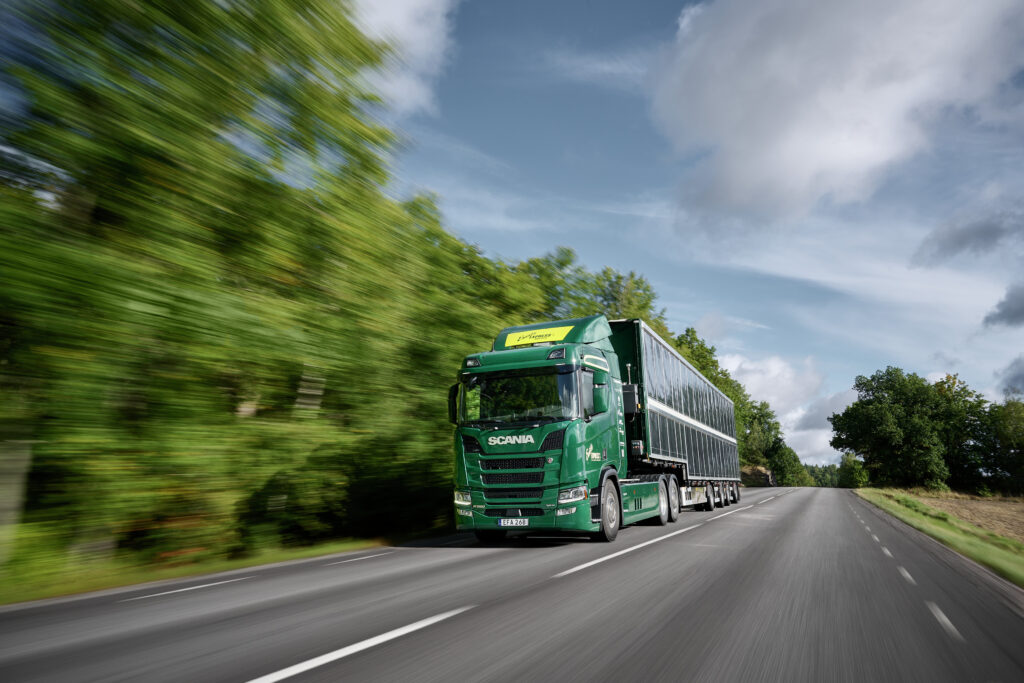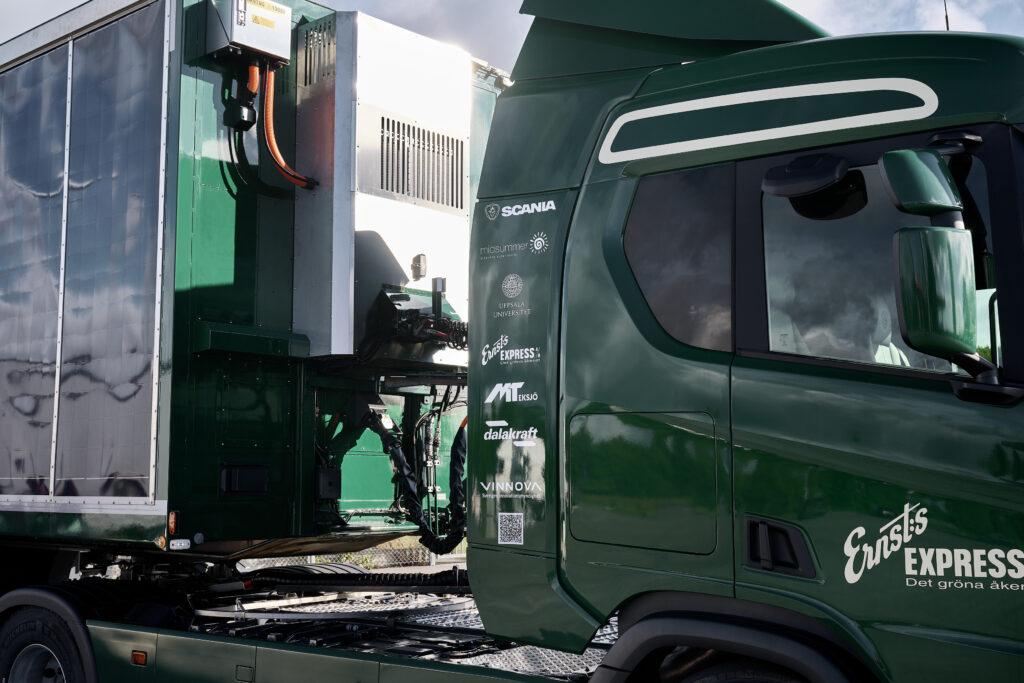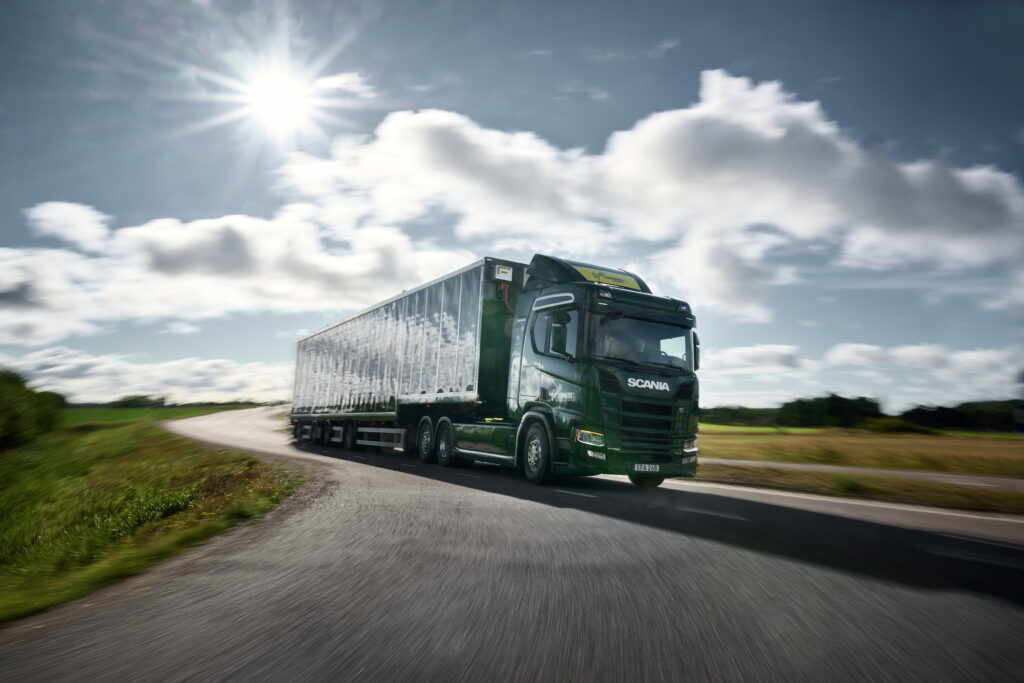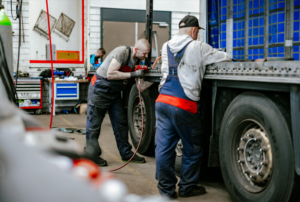Scania is trialling solar power technology on public roads as part of a two-year research collaboration with Uppsala University, Eksjö Maskin & Truck, Midsummer, Ernsts Express and Dalakraft.
The 560hp plug-in hybrid truck has been coupled to an 18m trailer covered in new lightweight tandem solar panels. The HGV is set to be tested on public roads by haulage company Ernsts Express AB.
Stas Krupenia, Head of the Research Office at Scania AB, said: ‘Never before have solar panels been used to generate energy to power a truck.
‘This natural energy source can significantly decrease emissions in the transport sector. And it is great to be at the forefront in developing the next generation’s trucks.’
Lars Evertsson, CEO at Ernsts Express, said: ‘The whole industry is facing big challenges in general, especially with the cost of fuels. Electrification from renewable electricity is the future.’
Scania covered 100m2 on the trailer with thin, lightweight, flexible solar panels. These include Midsummer’s new perovskite solar cells, which enable double the solar energy generation compared to the output of traditional solar cells.
They produce a maximum efficiency of 13.2 kWp (kilowatt peak), replenishing 300kWh of batteries on the vehicle – 100kWh on the truck and 200kWh in the trailer.
Sustainable solution
Erik Olsson, Head of Corporate Development at Midsummer, said: ‘Our solar panels are excellent for applications that make commercial vehicles sustainable. We see great potential to decrease the emissions from heavy vehicles with electrification.
‘Electricity generated by solar panels will save fuel and carbon emissions. We want to be a partner to count on, and this ground-breaking project enables that.’
Low climate impact
This research project has been partly funded by the Swedish government agency for innovation, Vinnova, to develop trucks with low climate impact using solar energy.
The vehicle has been designed to examine the energy generated and the overall decrease in carbon emissions.
The solar energy produced gives the hybrid truck a prolonged driving range of up to 5,000km annually in Sweden. In countries like Spain, the vehicle could feasibly double its driving range with more sun hours.
Erik Johansson, Project Manager and Professor of Physical Chemistry at Uppsala University, said: ‘This is an exciting project where academia and industry try to decrease the climate impact from transportation.
‘Our research towards efficient and light solar cells will be fundamental, especially when applying them in future trucks.’
They’ve also studied how trucks can interact with the power grid and bring forward new models for what will happen if several trucks, like this one, are connected to the grid.
One part of the project was to evaluate the charging impact on the electricity grid and whether it would be possible to sell the surplus.
Sverker Ericsson, Electrical Trade Engineer at Dalakraf, said: ‘We thought we would be able to buy the truck’s surplus energy. Unfortunately, that is not possible at the moment.
‘But the solar cells becoming part of the truck’s energy supply is fantastic. As an electricity trading company, we see all renewable energy sources are needed to cope with the energy transition.’
Daniel Sandh, CEO of Eksjö Maskin & Truck, adds: ‘Fuel is currently an increasing cost for haulage companies, and everything we can contribute to lower this cost will benefit the society long-term.’

